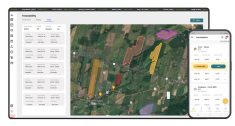Ontario farmers have been on a bin-building tear.
In 1999, the province had just 2.75 million tonnes of grain storage capacity on farms. By 2019, that had increased to 11 million tonnes. Now farmers are adding about 1,300 tonnes a year to the province’s on-farm storage capacity.
Why it matters: Ontario farmers are investing in on-farm grain storage, but they need to consider all the ins and outs.
Read Also

The forced Japanese-Canadian farmers of the Second World War
Manitoba’s sugar beet farms drew on displaced Japanese-Canadians from B.C. during the Second World War
There are compelling reasons to make this investment, according to storage equipment firms. Farmers can avoid lines at the elevator and harvest on their own schedule. They can access new markets for identity preserved crops.
But the biggest benefits are flexibility in marketing and the opportunity to get better prices later in the crop year.
“If there’s a $1 a bushel move in the price of corn between harvest and February, when you’re selling some grain, that can add up pretty quickly,” said Jim Allison, regional sales director for bin-maker AGI, at the firm’s display at the recent Canada’s Outdoor Farm Show.
Despite a building surge, the province lags its American neighbours, Allison added. Growers in the U.S. have been steadily building storage for years.
“For the last 20 or 30 years, there’s a lot of on-farm storage that’s been built there. It’s only in the last 10 years that it’s really expanded here.”
Now that Ontario growers are expanding their storage, it’s happening quickly, he noted. Many AGI dealers are busy putting up bins from April through to Christmas.
Taking the plunge
If a farmer wants to invest in new storage, it starts with a plan. They need to understand that they’ll likely expand the storage in later years, so it’s important to position the first bin properly for the sake of future additions.
“They should remember it’s probably not the last bin they’re going to build,” Allison said. “They should start with a plan that allows them to add more storage later. It’s not just where the bin falls off the truck. There should be some planning.
“If you’re going to put up some permanent handling at a later date, you want to be able to hit those other bins that you’re going to put up.”
Minding the store
The decision involves the cost and logistics of building bins and buying other equipment. It also means accepting the risk and responsibility of being your own elevator, says Ron Kleuskens, AGI technical sales representative.
“If you’re storing your grain on your farm and you happen to have a couple of bins, or get a bunch of brand new bins, and all of a sudden you’re in the elevator game,” he said.
“There’s responsibility that goes along with that, because it’s all cash. Everything that’s in a bin is money, as far as I’m concerned.”
Many smaller operators don’t want the expense or responsibility, he noted, especially if they’re also working off-farm.
“If smaller guys aren’t necessarily interested in taking on the responsibility, there’s nothing wrong with that,” Kleuskens said. “That’s where elevators come in. They’re happy to do it.”
If farmers do take the plunge, there are resources to learn the needed skills.
“You have to learn to manage the crop in the bin,” Allison said. “It’s not just a matter of putting it in the bin. You have to monitor it, make sure that the moisture is correct, the temperature is correct.”
Extension staff and bin retailers can provide information, and Kleuskens says neighbouring farmers who have been storing grain for a while are also excellent resources.
“If you know some guys that have been successful, put a bug in their ear and see if they can help you every now or then, or be willing to give you advice, that sort of thing.
“Everybody needs a mentor at some point in their life, and if you decide to get into the grain storage game, find somebody you trust and know and that has been successful at it, and listen and ask questions and talk to your dealers.”
Making the decision
Allison says the decision to add on-farm storage comes down to individual goals and needs.
“I’ve talked to guys who have everything from 150 acres of corn to 5,000 acres of corn. “It really just depends on your cash flow and your goals.”















